In-Depth: 📖 Tactical Analysis, 4-2-3-1 formation (First Half)
Lad03 2021-07-16 20:48:03 评论
Do you really understand the formation in Football games? Today, AF is going to analyze the tactical theory and the patterns of the 4-2-3-1.
Various managers have used this formation with a different game model, style and tactics. For example, Ole Gunnar Solskjaer, Manchester United’s manager has used this formation in most of the matches in the EPL last season. On the other, Jose Mourinho, a manager that prefers to counterattack had used the 4-2-3-1 formation in the recent past at Tottenham Hotspur, but also when he was at Real Madrid. This analysis will demonstrate the great flexibility that this formation has, and the different scenarios that managers are following depending on their philosophy.
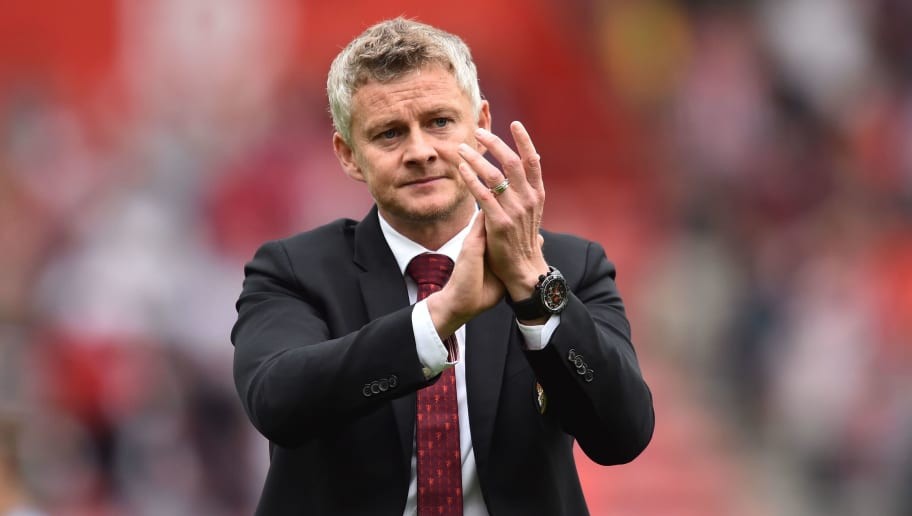
Roles and responsibilities
We will start the analysis with the players’ responsibilities in the 4-2-3-1 formation, from the back the goalkeeper must be good at organising the team. Many dangerous situations can be avoided if a goalkeeper knows how to organise the team while defending. A goalkeeper has to be tall, with good reflexes, and be able to stop the shots from various distances. Modern football demands the goalkeepers be able to pass the ball, and be part of the build-up phase. That gives an extra advantage to the team with an extra player.
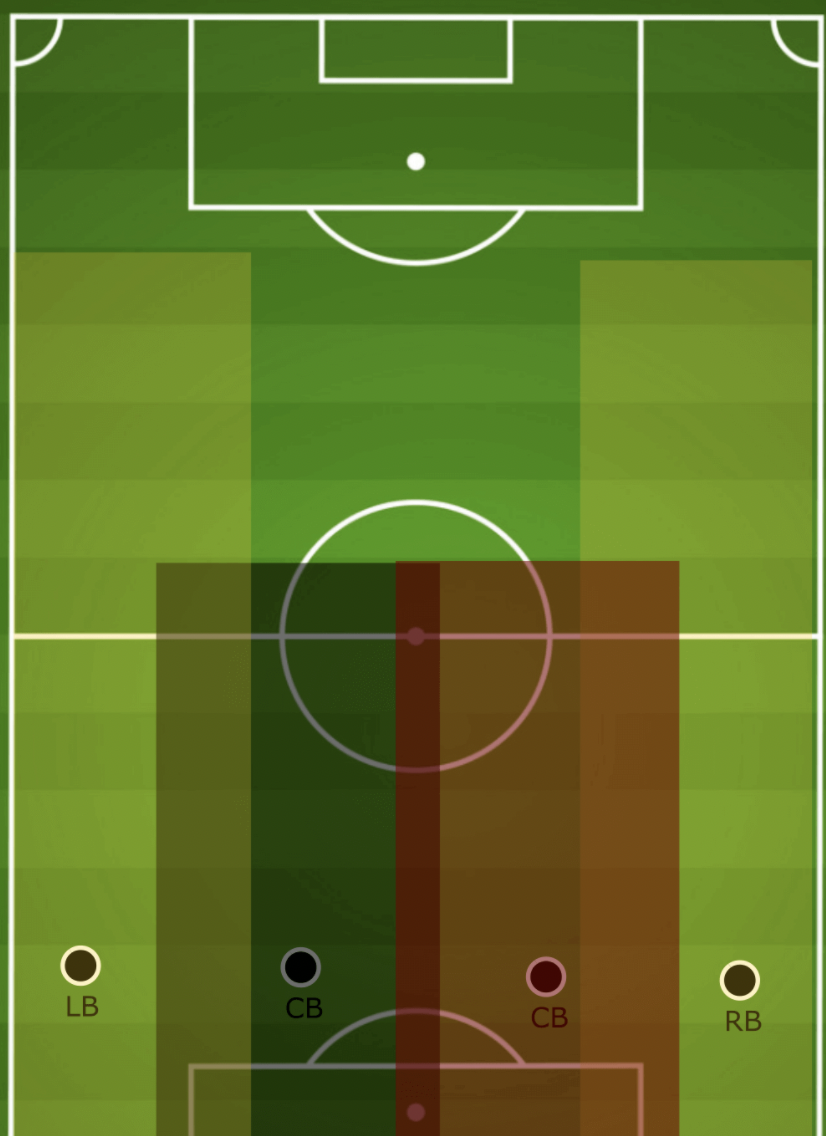
The full-backs are two of the fittest players in the field. Full-backs should be fit, as depending on the manager’s game model, they should participate within the offensive part of the game by over or under-lapping the wide attacking midfielders, and they have to be able to deliver the ball into the box. Additionally, full-backs must be good defenders, as most of the time, they have to deal with the most technical players of the opposition, like wingers, or wide attacking midfielders. Full-back’s spaces are the wide areas, and they could go inside to support the team either when in possession, or when the team is defending. The two centre-backs must be able to defend in a 1-vs-1 situation and understand both zonal and man-to-man marking. They have to communicate with each other and be able to organise the team from the back. Depending on the manager’s game model, centre-backs should be good with the ball on their feet, as they are starting the possessional game of the team. The image below demonstrates the areas that the players are moving during a game.
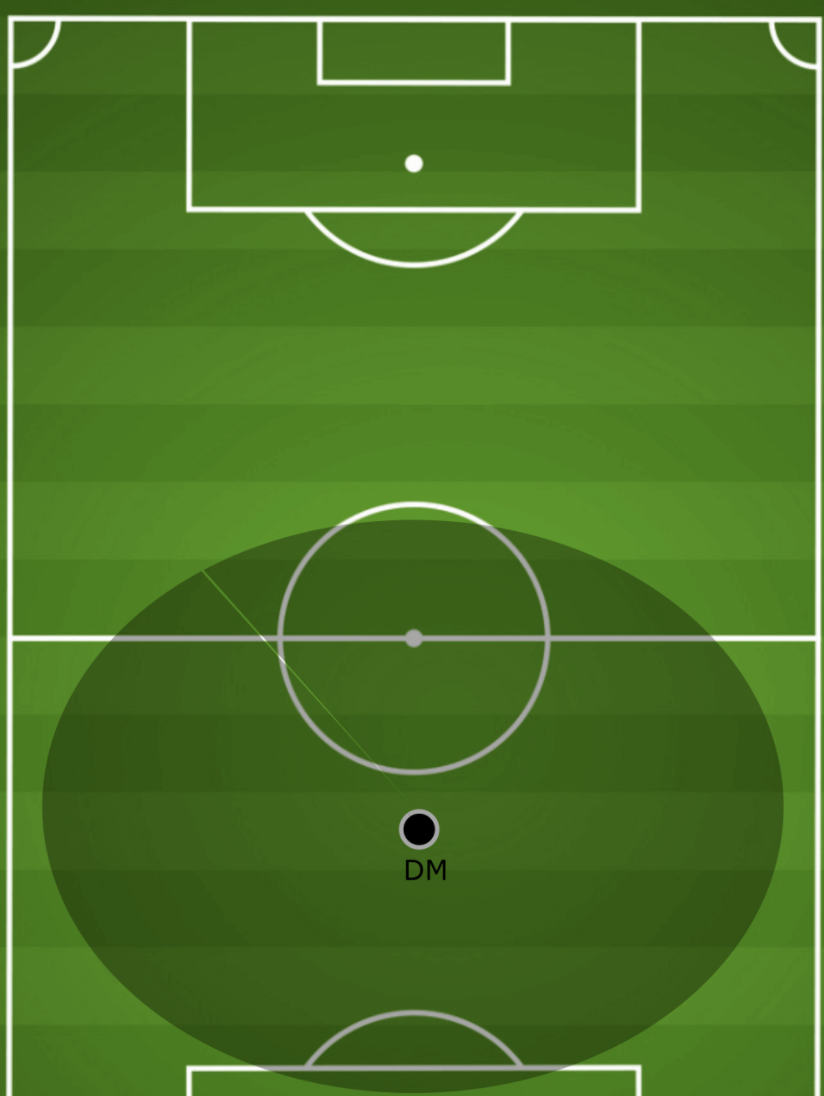
Going higher in the pitch, and analysing the two midfielders, someone can notice that this formation divides the responsibilities among them. There is a defensive midfielder, that is moving in front of the defensive line and is trying to hold the balance. For that reason, that player is mostly a strong physical player that can deal with ground and aerial duels. Moreover, this player, many times, acts as a linking player between the defensive and the offensive line, as he receives the first pass from the back. There are times that the defensive midfielder will go higher in the field to cover the central midfielder. The central midfielder is a more technically gifted player. He has to be strong, physically fit, quick, and with a high level of endurance, as he supports the team with and without the ball all over the field. He must be a player that can penetrate the opposition, and break lines with his passes, as his team has more chances to win the game if he manages to pass the ball well from midfield. The image below is showing the areas that the two midfielders are covering, depending on their role during a match.
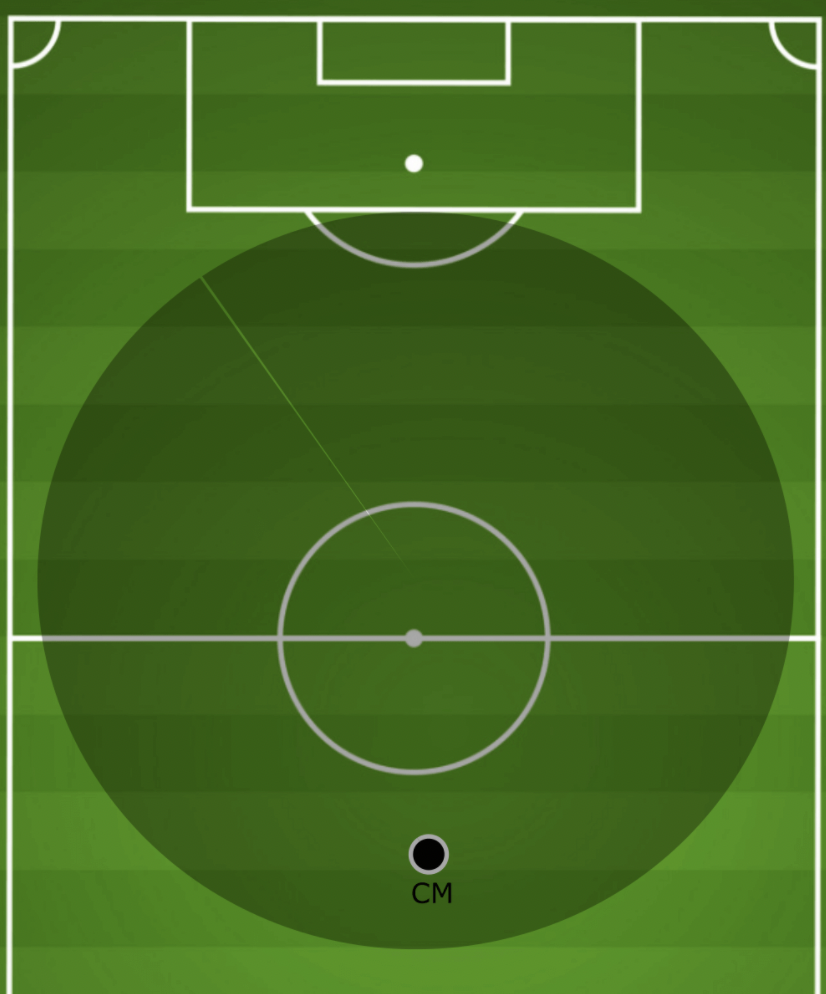
The players that are in the midfield area must be conditioned for endurance, electric speed, and technically gifted. That will allow them to go engage 1-vs-1 situations and overcome their opponents. Specifically, the attacking midfielder must be unpredictable with the ball on his feet. He must be able to penetrate the opposition’s defensive line. Moreover, he must know to take advantage of the free space and either drive the ball in there or make a pass. Overall, the central attacking midfielder or number ’10’ must be a continuous threat for the opposition with and without the ball around the box. Except the above, the number ’10’ must be able to defend, as modern football demands from him to participate in the game when his team does not have the ball, as well. The wide attacking midfielders have to be exceptional dribblers and unpredictable. They must have the ability to deliver the ball into the box, and be good at combination play. They have to read the game and possible scenarios and take advantage of possible weaknesses of the opponent and exploit them. Without the ball, these players have to support the full-backs defensively. That is the reason why they have to be in excellent physical condition. A crucial factor for the success of this formation has to do with the partnership between the full-backs and the wide attacking midfielders when defending and attacking. Below there is an image with the areas that the players are moving during a game according to their positions.
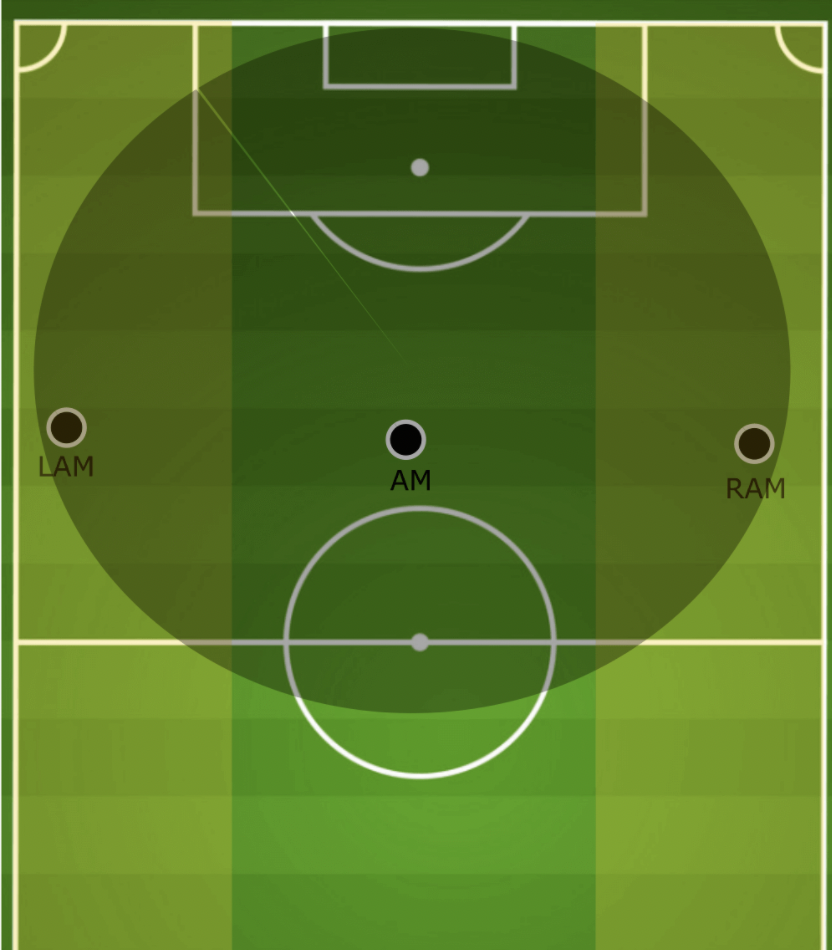
Because of the formation, the centre forward has to be physically strong, and able to receive the ball under instant pressure. That is because he is the only striker, and for that reason, he has to face two or three defenders. The striker must be quick with electric pace, and able to read the game to exploit free spaces or take better positioning from the defenders. He must have the ability to score from different distances and in different ways. Moreover, he must be able to play away from the box. On that way, he will support the possessional play and will create spaces that the attacking midfielders can take advantage of. Specifically, the centre forward and the central attacking midfielder have to cooperate and have excellent communication on the field, as they can exploit opposition in many different ways, and especially by creating free spaces with their movements. Despite that, the centre forward is the first defender of the team. For that reason, he must have the physical condition to press high and try to regain the ball. Below is an image that is indicating the area that a centre forward is moving within the 4-2-3-1 formation.
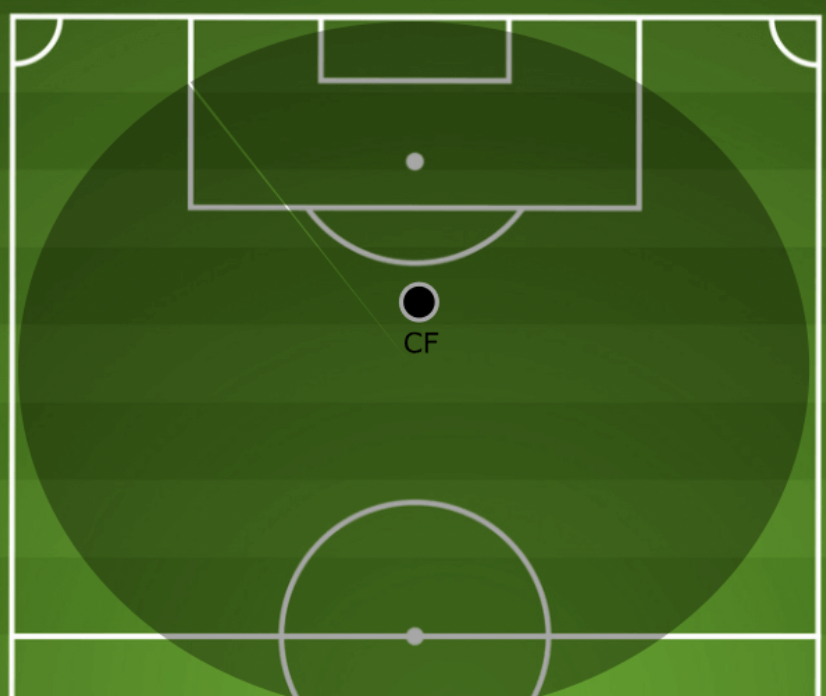
Build-up
One of the most common ways that we meet in the teams that are using the 4-2-3-1 formation when they are trying to build up their game from the back, is the two centre backs go wide to receive the ball from the keeper. The full-backs are taking a higher position in the middle third of the field, and usually, the defensive midfielder, is a bit deeper, comparing with his partner in that area. With these movements, the team is trying to stretch the opponent. By doing the team will gain more space to pass the ball, and eventually move it forward throughout the thirds. Free space in football means more time. So, these coordinated movements in the field are crucial for the team to get the ball out of the back safely. A pass from the goalkeeper into the centre-backs or the defensive midfielder that came deeper seems a reasonable option for the goalkeeper.
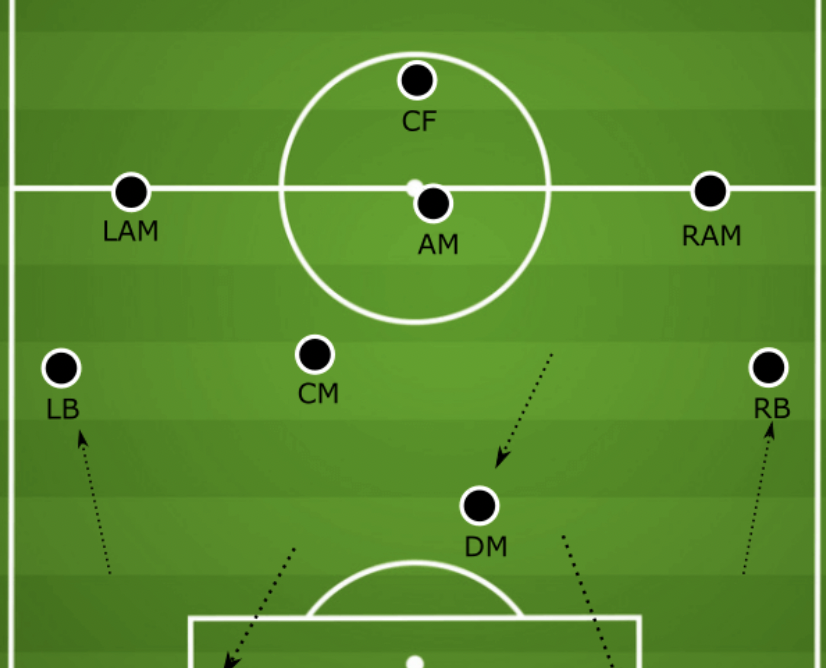
There is always the option for the opponent to press high in the pitch. On that occasion, and if the opponent is pressing with two strikers, an option would be the defensive midfielder to drop either among or next to the two centre-backs. On that way, the team with the 4-2-3-1 formation gets over with the numerical disadvantage and has more chances to transfer the ball from the back. The rest of the players have a similar position as before and try to stretch the opponent’s formation and exploit any possible gaps and weaknesses.
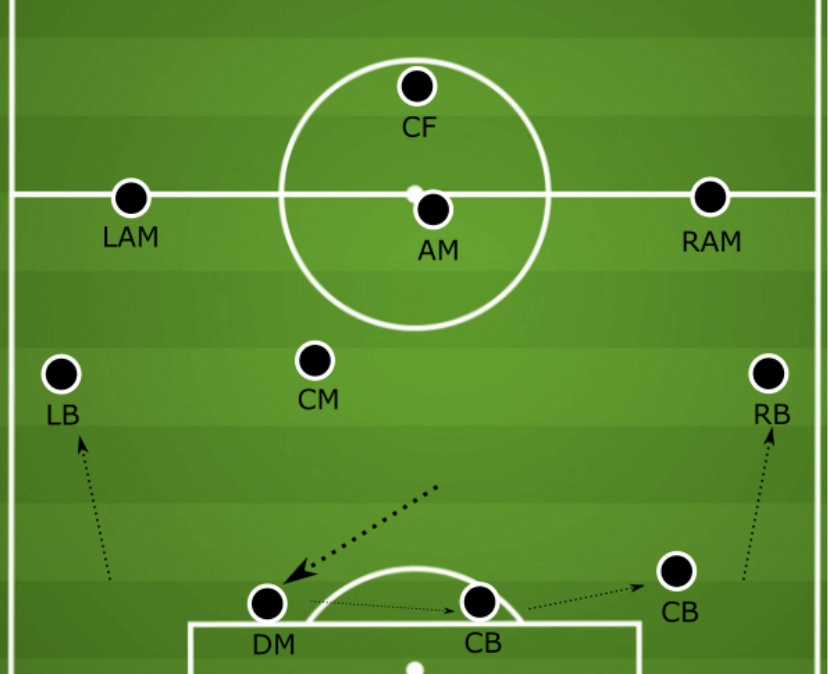
If the opponent adjusts on this change and starts pressing with three players, then the next option could for a full-back to come deep – next to the final line – and ask for the ball. On that way he sets a dilemma for the opponent: either one of the opponent’s players is following him, but then there is a lot of free space in-between the lines, or no one is following him and let him receive the ball and start the possession game. The defensive midfielder could support him and move to that space that there is a lot of free space. The full-back’s movement is an interesting move, as we do not see it often. Moreover, this move could cause problems at the opposition’s high pressure, as the formation is going to be stretched and the team with the 4-2-3-1 formation could exploit the free space.
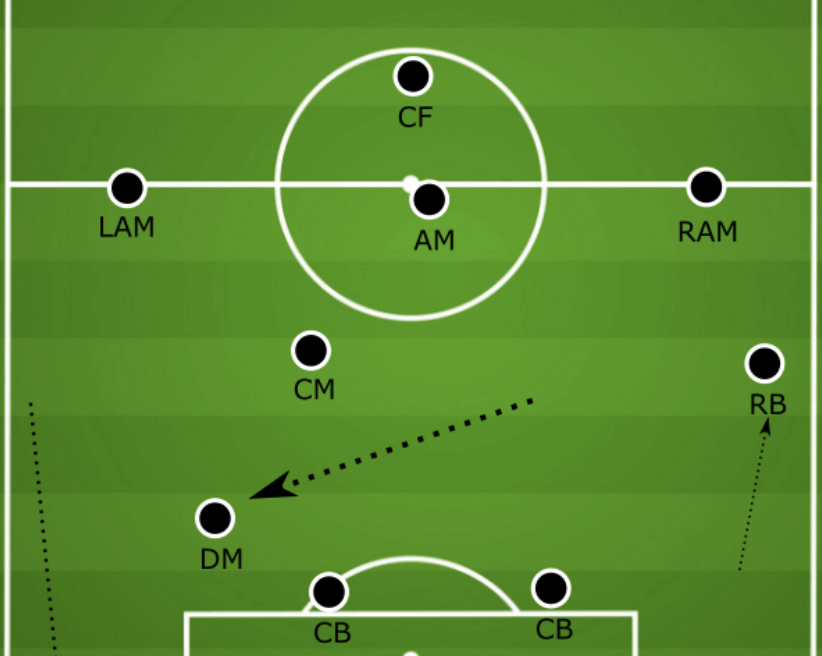
Another option for the goalkeeper if the opposition adjusts in this scenario could be a long ball into the wide areas. Teams that pressure high usually do it with three or four players. So, if the goalkeeper tries a long ball into the wide areas, to one of the two full-backs, then automatically passes over the opposition’s high defensive block. The issue then is that the players around the full-back have to support him immediately to retain the possession of the ball and start the possession game from the middle third of the field.
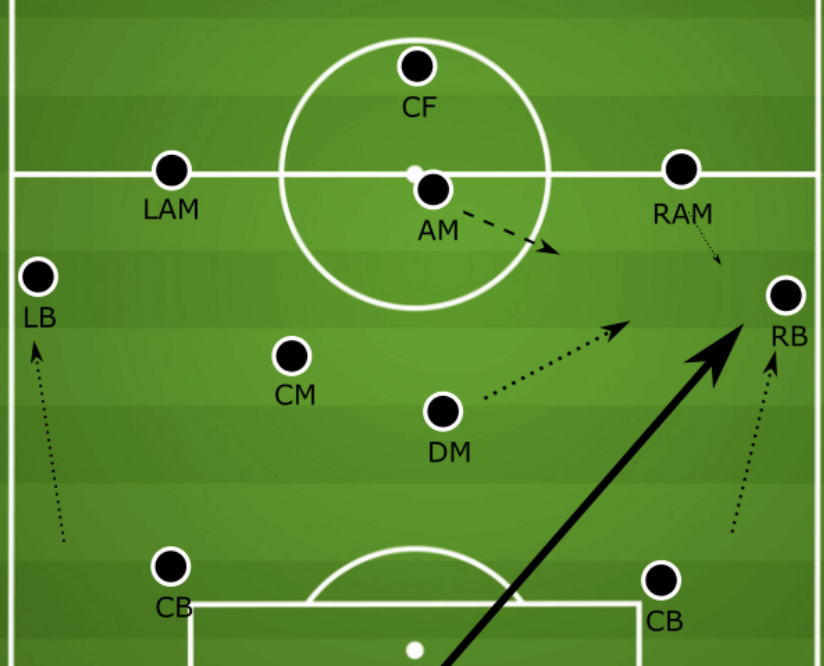
Tomorrow we will continue 4-2-3-1 with possession throughout the thirds and how this formation runs without the ball
- 消息参考来源: All Football
- 严禁商业机构或公司转载,违者必究;球迷转载请注明来源“懂球帝”
- 懂球帝社区规范:抵制辱骂

